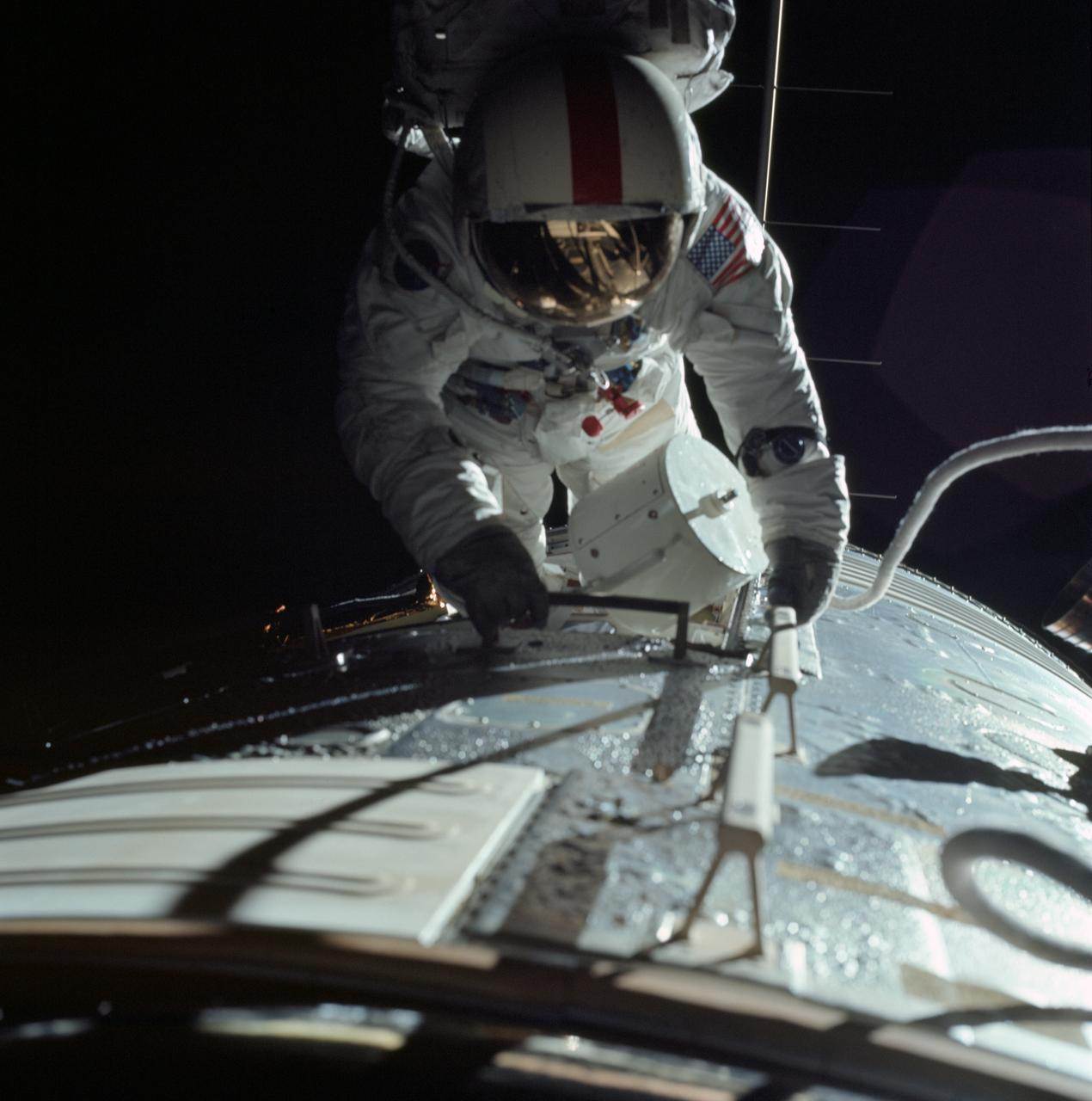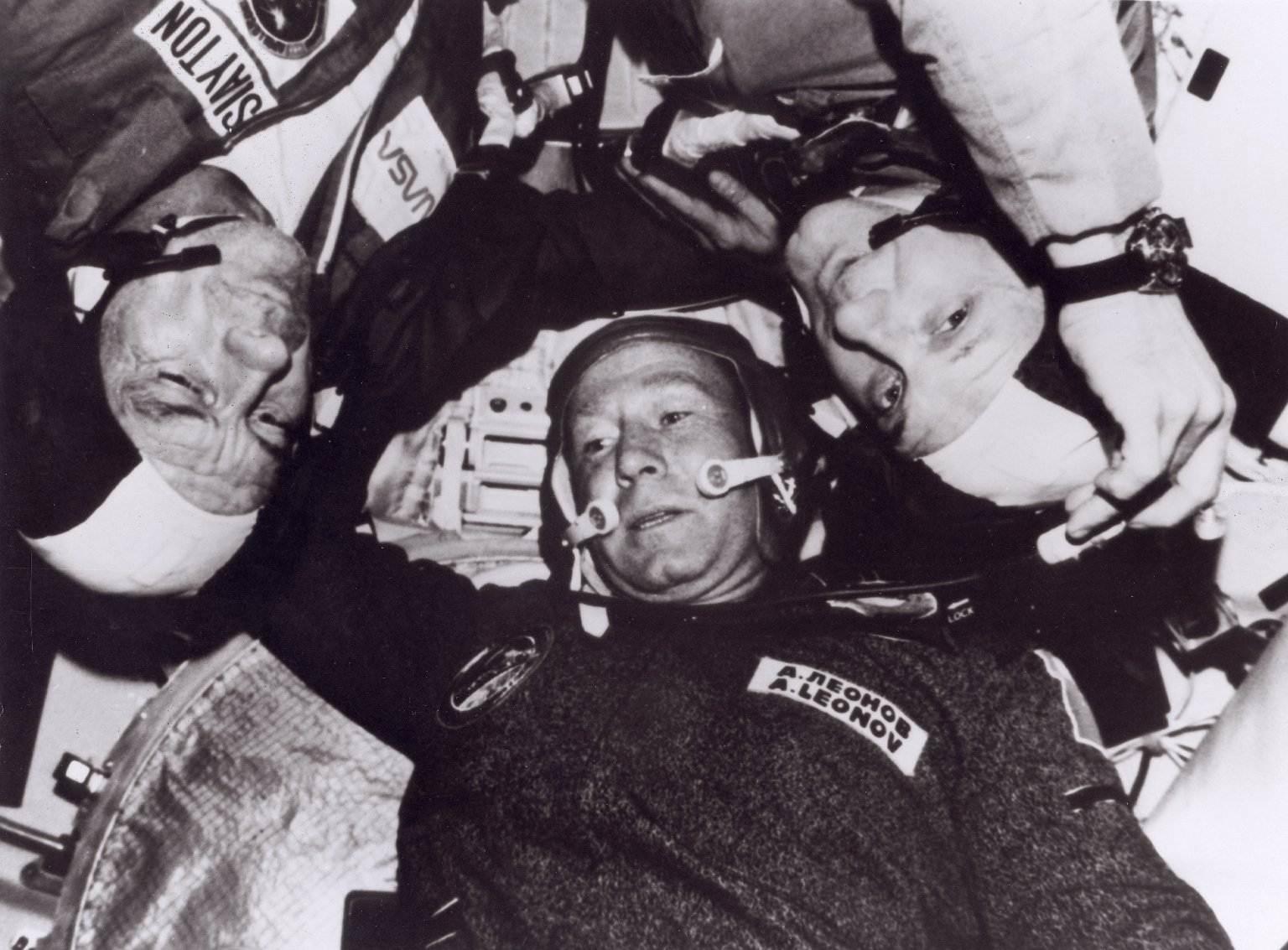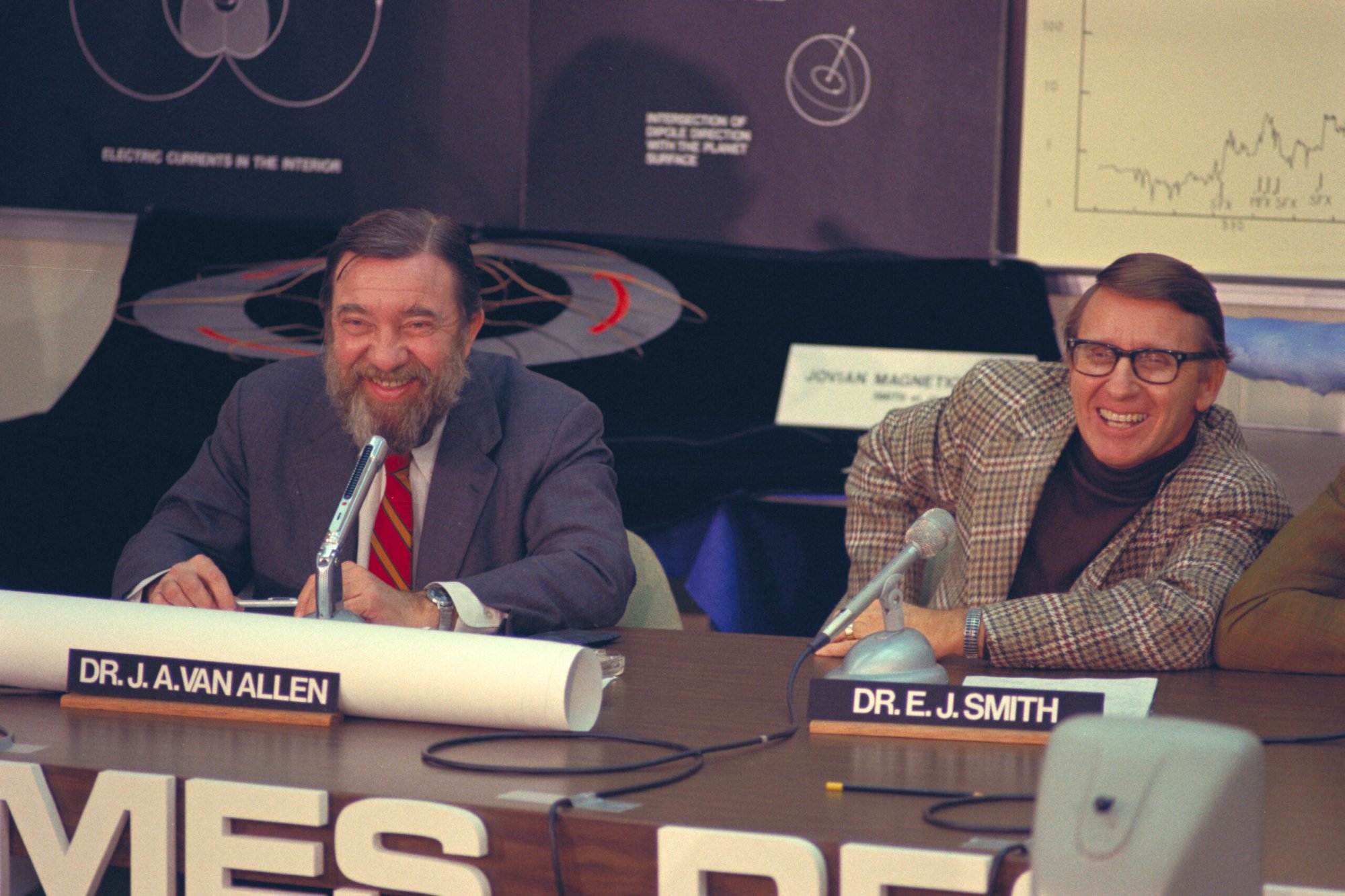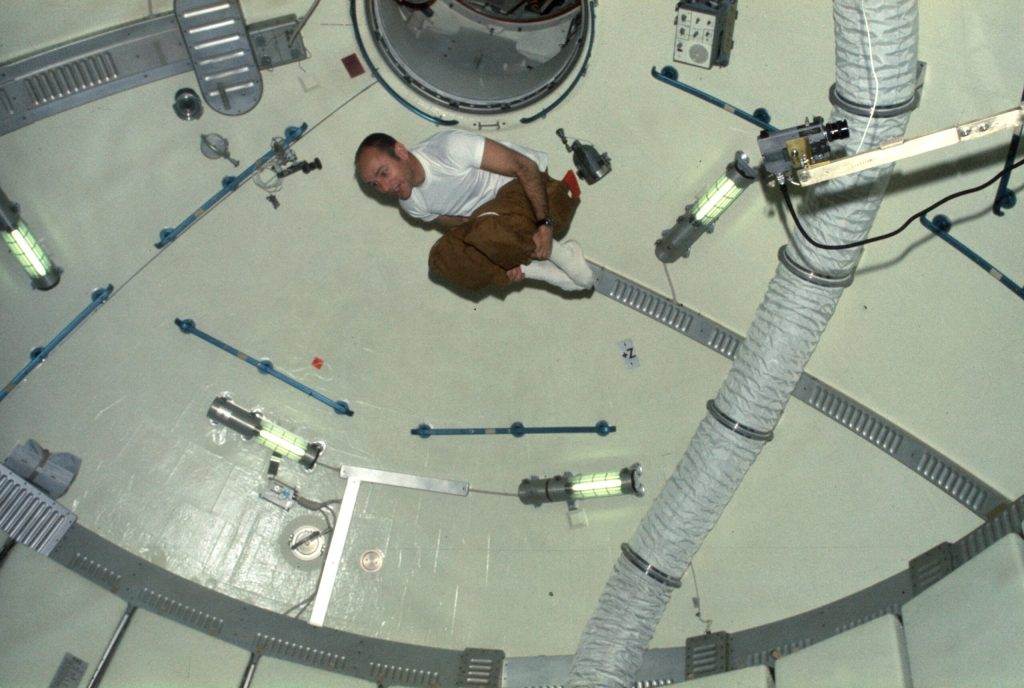This Space Available
By Emily Carney
Last week, the Inspiration4 mission launched from Kennedy Space Center, flew for three days in Earth’s orbit, and splashed down off the Atlantic coast, marking the historic completion of the first human spaceflight crewed by non-space agency astronauts. Their mission – from the crew’s selection, their training, to the mission and its end/aftermath – continues to be chronicled through newer forms of media, such as the streaming platform Netflix and social media (Twitter, Facebook, etc.). This is obviously a new way of working compared to what we’ve historically been used to with NASA spaceflights, starting from their earliest days. However, one thing present is the human element factor that we saw born in human and robotic spaceflight during the 1970s. Inspiration4’s distinctly unscripted public moments can trace their lineage to a decade in which spaceflight was no longer viewed as something strictly managed and choreographed by public affairs’ personnel.
The Human Element in Crewed 1970s Spaceflights
Throughout the late 1950s and 1960s, NASA’s human spaceflight program and its astronaut corps were strictly managed by the space agency. LIFE magazine did have a financial and intellectual property deal with the first astronauts to chronicle their stories, but these stories were largely stage managed by the NASA and the magazine, allowing little room for what probably were the astronauts’ actual thoughts and feelings. Rene Carpenter’s LIFE magazine account of her husband’s 1962 orbital spaceflight was an outlier, but it didn’t inspire other astronaut wives – or their spouses – to write their own highly personal accounts detailing their experiences. One memorable passage from Group 3 astronaut Michael Collins’ book Carrying the Fire describes the “charm school” the astronauts had to endure, where it was emphasized that their public conduct would be judged right down to how they folded their arms over their suit jackets.
Magazine deal or not, no one can argue that the 1960s cadre of astronauts weren’t extremely mission-oriented. Apollo 7 astronaut Walt Cunningham touched upon this explicitly in a 1999 Johnson Space Center oral history with Ron Stone: “Well, Apollo 7 became very important …If we had not had a success on Apollo 7, we really don’t know what would’ve happened to the space program. Another accident and the fainthearted in the country, as we have a tendency to be, would’ve been clamoring to stop it, you know. People don’t realize there are a lot of things worse than dying, and there are a lot of things worth dying for in this life. And certainly we believed that that was one of them …We never even had any hesitation about that.”
Moreover, one can look at NASA’s human spaceflights – starting with Freedom 7’s first suborbital jaunt in 1961, and spanning to Apollo 11’s first Moon landing in 1969 – during this time as one very long “test program.” Each subsequent spaceflight was essentially based on expanding upon the previous flight’s goals. As the Gemini program of 1965-66 progressed, NASA sequentially expanded its repertoire of skills to involve rendezvous and docking, extravehicular activities, and high apogee orbits – all things that needed to be tested prior to the Apollo program, which would use this set of skills in each of its lunar missions. There was no room for mistakes, or displaying the human element, whether it involved joy or fear, or both.

This style of working – testing out “sequential steps” and expanding upon skill sets – was also used during the early Apollo missions. One deviation included the transition from Apollo 7, a low Earth orbit mission meant to test the command and service module, to Apollo 8. Apollo 8 was originally due to test the Lunar Module, but as it was not yet ready, the mission famously became the first human spaceflight to orbit the Moon. The tough decision by NASA to fly Apollo 8 as a trans-lunar mission turned out to be one of the space agency’s greatest successes, and yielded one incredible moment where the human element of spaceflight was, at long last, acknowledged: the Genesis reading in lunar orbit on Christmas Eve, 1968.
During this time, the crew of Frank Borman, Jim Lovell, and William Anders went entirely off-script, and delivered a televised message along with images from the Moon that sent chills down the world’s collective spine. This was one of the first times NASA astronauts publicly expressed themselves during a mission to discuss anything other than technical matters, but it would not remain the status quo. Apollo 8’s mission commander, the no-nonsense Frank Borman, was once quoted as saying, “The last thing I would have wanted on our crew was a poet.” There were some glimpses of humanity during the earlier Apollo missions: Gene Cernan’s expletives during Apollo 10, and the general air of excitement and enthusiasm during Apollo 12’s mission crewed by three best friends, Pete Conrad, Alan Bean, and Dick Gordon, particularly after their launch vehicle was struck by lightning not once, but twice during ascent.
While astronauts obviously walked on the Moon, their identities were largely concealed by their bulky A7L suits and gold visors, meant to keep out the Sun; save for space enthusiasts, the men on the Moon weren’t immediately identifiable, but to most observers they were simply representatives from Earth who happened to be walking upon the Moon’s surface. They, too, largely stuck to their mission objectives, which were highly scripted. Save for some lighter moments during Apollo 12 and the famous “golf swing” performed by Alan Shepard during Apollo 14, moonwalkers may have represented humanity on the Moon, but weren’t allowed to display much humanity.
The human element wouldn’t be introduced again until the three final Apollo lunar missions that occurred during the early 1970s. Following his mid-1971 mission, Apollo 15’s command module pilot Al Worden would do something that was probably anathema to Borman – he would write and publish a book of poetry inspired by his three days alone in lunar orbit. Apollo 16 would see its moonwalkers be likened to “Laurel and Hardy on the Moon,” as Charlie Duke fell over a few times, and John Young let the entire world know how he felt about the potassium-laced orange juice he drank during the flight. Apollo 17 astronauts Cernan and Dr. Harrison Schmitt leapt and clowned around a bit on the Moon, singing while they worked. And Apollo 17 also had Ron Evans, who truly deserved his own talk show following the mission’s end. The joy he expressed in performing the final deep space EVA during the Apollo program is still infectious. The joy he felt after his spaceflight is still infectious.
By 1973, the Skylab space station program showed that the human element was needed on all fronts to function in space, and to help the space station itself to function in space. Skylab’s earliest moments in orbit were fraught with failures, and on Earth as in space, NASA’s workforce had to band together quickly to find solutions to save the ailing workshop. By summer 1973, Skylab had not only survived these early adversities, but thrived; video from the first and second missions downlinked to Earth showed the crews having what looked like a spectacular time twirling and whirling in the space station’s gigantic orbital workshop. Space enthusiasts hadn’t been treated to visions like this during the Apollo lunar missions, as those missions’ work spaces were cramped.
For many, these views were the first taste of what a space trip could look like: a fantasy world of tumbling in microgravity without a care in the world. While we know that’s not true (obviously, anyone who goes to space is aware of risks), it certainly advertised the space experience well. One person inspired by these views was a Princeton professor by the name of Dr. Gerard K. O’Neill, whose book The High Frontier: Human Colonies in Space released later in the decade would function as a call to action, inviting people from all walks of life to settle space.

By late 1973, another human element was introduced to spaceflight, and was actually well-timed, since mission planning had to be modified for the upcoming Space Shuttle program: professional burnout. The third Skylab crew was infamously over-scheduled right from the beginning of their mission, and by early 1974, were forced to revise their schedule with ground controllers to ensure that they could complete their mission efficiently. This worked swimmingly, and Skylab 4 was perhaps the most successful Skylab crew upon splashing down in February 1974.
1975’s Apollo-Soyuz Test Project perhaps introduced some of the best interactions and expressions of joy in space up until that point in time; the U.S. and Soviet crews ate together, celebrated together, and genuinely seemed to get along beautifully in space, despite any political tensions between both of their nations on Earth. As the 1970s began to transition into the 1980s, it became clear that the human element would be needed to make spaceflight interesting to a public that had almost forgotten there was a space program. As new faces were added to the program (which included the first women, Asian, African-American, and European astronauts, and non-NASA payload specialists), it was clear that NASA would and could no longer be the space program of the 1960s, when stoic male astronauts often expressed little to no emotion or excitement about their missions, and every aspect of spaceflight was scheduled and/or scripted.
The Human Element in Robotic 1970s Spaceflights
Two examples of the human element expressed even in robotic spaceflight during the 1970s include the plaques flown on Pioneers 10 and 11, and of course, the Voyager Golden Record. Each artifact was meant to express the human condition to possible extraterrestrial life, if said extraterrestrial came upon each spacecraft; the Voyager Golden Record also included photos, music and sounds from Earth, and other media to function as an aerial or a signal to other worlds and/or lifeforms.

Moreover, one can’t deny the wonderment scientists, engineers, and technicians alike expressed when the major planetary science missions of the 1970s actually worked. NASA and JPL films of the era show the near-disbelief in control rooms when, say, the Viking landers touched down and actually returned clear images of Mars for the first time. This attitude has been carried over to more recent milestones, such as when Mars rover Perseverance landed in Jezero Crater earlier this year – except now with the instant gratification provided via social media platforms, the public was also able to immediately experience the joy, as well.
From Ron Evans’ “Hot diggety dog!” in December 1972 as he prepared to remove film cassettes from command module America, to Hayley Arceneaux’s unbridled glee last week as Resilience’s cupola view was at last revealed, the human element cannot be overlooked in both crewed and robotic spaceflight. French ESA astronaut Thomas Pesquet, who is currently aboard the International Space Station, tweeted to Inspiration4 and SpaceX on September 20, “…[G]oing to space is never easy for anybody, though most of the time we insist on the positives and the fun parts for the camera, and keep the pain, the sacrifices, the discomforts for ourselves. Looking forward to hearing your stories one day!” The positives, joy, and pain are feelings experienced by all people – and spaceflight, at its heart, is about people.
Featured Photo Credit: “Astronaut Alan L. Bean, Skylab 3 commander, doing acrobatics in the dome area of the Orbital Workshop (OWS) on the space station cluster in Earth orbit. The dome area is about 22 feet in diameter and 19 feet from top to bottom.” 1973 NASA Photo.
*****
Emily Carney is a writer, space enthusiast, and creator of the This Space Available space blog, published since 2010. In January 2019, Emily’s This Space Available blog was incorporated into the National Space Society’s blog. The content of Emily’s blog can be accessed via the This Space Available blog category.
Note: The views expressed in This Space Available are those of the author and should not be considered as representing the positions or views of the National Space Society.



















